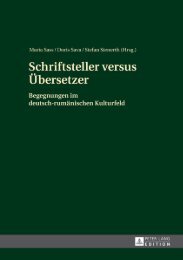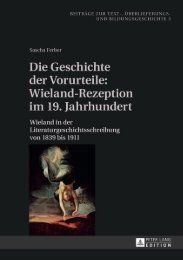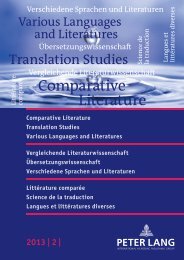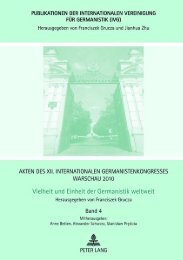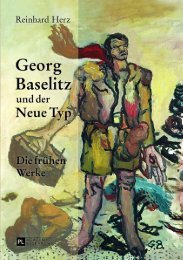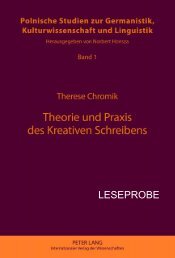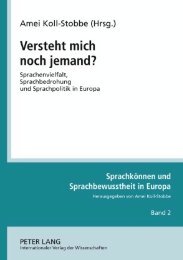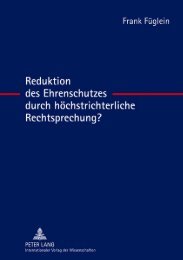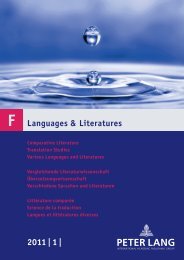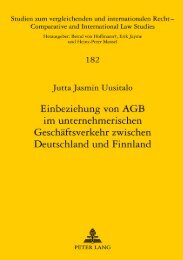Extract (PDF) - Peter Lang
Extract (PDF) - Peter Lang
Extract (PDF) - Peter Lang
Create successful ePaper yourself
Turn your PDF publications into a flip-book with our unique Google optimized e-Paper software.
4 Fernanda Peñaloza<br />
the epitome of nothingness, the land of exile, a ghostly scenario where the<br />
post-modern traveller can write: “nowhere is a place”.7<br />
The intertextual map outlined above links a wide mixture of narratives<br />
and their powerful symbolic investments that are therefore intertwined in<br />
an ambivalent and ambiguous process of creating, representing and confronting<br />
otherness. Such discursive intersections pertain to the western<br />
fascination with Patagonia, which can be dated to 1520, the year of Ferdinand<br />
Magellan’s circumnavigation. At the time the Portuguese explorer passed<br />
from the Atlantic to the Pacific through the strait that was named after him,<br />
it was believed that right at the very “end of the earth” there was a terrifying<br />
land, the legendary “Terra Incognita Australis”. In An tonio Pigafetta’s<br />
account of the Magellan expedition, the height of the first Tehuelche to<br />
meet Europeans is emphasised. With the language of amazement characteristic<br />
of the Early Modern period and marking the birth of one of the most<br />
enduring myths of the region, Pigafetta describes the Tehuelches as being<br />
of gigantic proportions. From then on, the southern region of Chile and<br />
Argentina has embodied powerful images that so easily appear to convey<br />
the monstrous, the uninviting, the alluring and the unexpected. Conquerors,<br />
explorers, adventurers, settlers, exiled, outlaws, scientists, missionaries<br />
and all kinds of real and imaginary visitors transformed this vast area of<br />
over 1 million square kilometres into an enigmatic territory.8<br />
7 Bruce Chatwin and Paul Theroux. Patagonia Revisited. Salisbury: Michael Russell,<br />
1985. 13. A long-running scientific enquiry around the rumours of giants in Patagonia<br />
discredited the tales of the explorers, but only to some extent. The strong belief that<br />
supported the myth for many years was the fifteenth century theory affirming that<br />
the closer to the North or the South Poles, the bigger the size of the people who live<br />
there. With the Enlightenment many journals fed the myth, but several scientists<br />
began to regard the issue with scepticism. Among them was the French natural<br />
philosopher, Georges-Louis Leclerc, Comte de Buffon (1707–1788) who denied<br />
the existence of giants by “proving” that animals and plants of the New World were<br />
small and degenerate in comparison to European.<br />
8 Whereas Chilean Patagonia extends from part of Los Lagos and the whole of Aysén<br />
and Magallanes known as the X, XI and XII regions, respectively, Argentine Patagonia<br />
is comprised by five provinces: Río Negro, Neuquén, Chubut, Santa Cruz and Tierra<br />
del Fuego. Argentine Patagonia was centrally controlled by the national government



